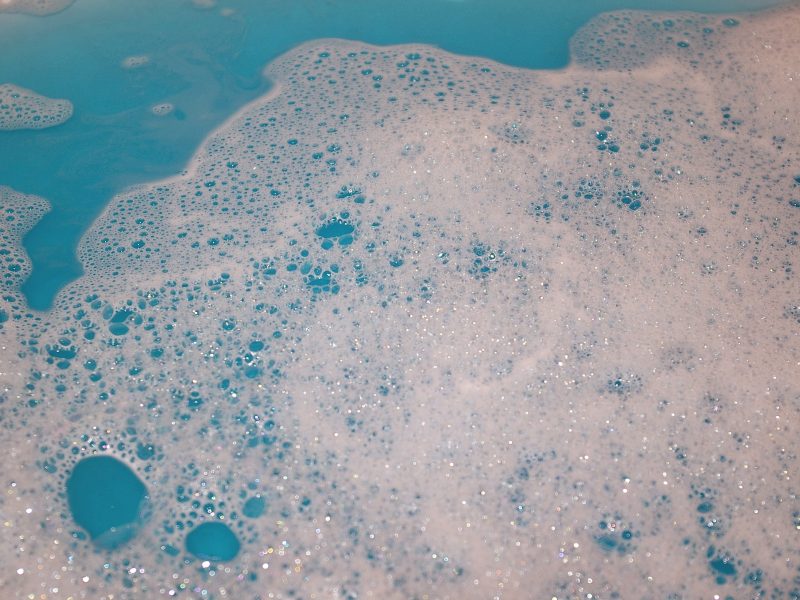The Role of Defoamers in the Chemical and Food Processing Industries
The Role of Defoamers in the Chemical and Food Processing Industries
Blog Article
The Duty of Defoamers in Enhancing Product Quality and Efficiency
In numerous manufacturing processes, the visibility of foam can significantly hinder item quality and functional efficiency. Defoamers function as necessary ingredients that mitigate this concern, ensuring smoother production process while enhancing the visual and functional qualities of the last items (defoamers). Their application extends a plethora of sectors, from food and drink to pharmaceuticals, where uniformity and dependability are paramount. The choice of the suitable defoamer can be vital to attaining ideal results, raising vital inquiries regarding formulation compatibility and performance metrics that warrant more expedition.
Understanding Defoamers
Understanding the role of defoamers is important for preserving product top quality throughout various markets. Defoamers are chemical additives created to stop the development and reduce of foam in fluid systems, which can detrimentally impact processes such as mixing, filling up, and surface area stress. Lathering can lead to inadequacies, item flaws, and endangered visual appeal, making defoamers an essential part in making operations.
In industrial applications, defoamers assist to enhance product uniformity and security. The effective usage of defoamers not only ensures smoother manufacturing processes yet additionally adds to remarkable product performance.
In addition, the option and formula of a defoamer need to straighten with details application needs, such as compatibility with various other active ingredients, efficiency under differing temperature level and pH conditions, and prospective regulatory restrictions. Eventually, recognizing defoamers' features and their relevance in different solutions is important for maximizing production and ensuring the best final result.
Sorts Of Defoamers
Defoamers can be categorized into a number of kinds based on their make-up and device of activity. The primary types include silicone-based, non-silicone natural, and inorganic defoamers.
Silicone-based defoamers are among one of the most effective, mainly as a result of their capability to spread out promptly on the fluid surface and interrupt foam formation. Their unique chemical structure permits remarkable stability, making them ideal for high-temperature applications and environments with varying pH levels.
Non-silicone organic defoamers, usually made up of fatty acids or natural oils, are valued for their biodegradability and reduced toxicity. These are commonly made use of in food and drink applications where safety and security and environmental impact are critical.
Inorganic defoamers, that include materials like talc or calcium carbonate, act by raising the thickness of the fluid, consequently decreasing foam stability. They are typically used in industrial processes where compatibility with other materials is not a concern.
Each kind of defoamer has distinct advantages and limitations, allowing for customized remedies relying on the details foaming concerns run into in numerous applications. Comprehending these distinctions is critical for maximizing efficiency and achieving desired item top quality.
Applications Throughout Industries
Various industries leverage defoamers to enhance product top quality and functional efficiency. In the food and drink field, defoamers are crucial in procedures such as brewing and milk manufacturing to stop foam formation, which can result in inadequacies and product inconsistency. By regulating foam, suppliers can make sure better return and a more consistent item.
In the pharmaceutical industry, defoamers play an important duty in the solution of liquid medicines, where too much foam can impede mixing and exact application. Their use aids preserve the honesty of the formulas and helps with smoother manufacturing procedures.
The paint and coatings sector also depends on defoamers to improve the efficiency of products throughout application. By reducing foam, these ingredients ensure a smoother coating and improve the visual qualities of the last item.

Advantages of Using Defoamers
While the application of defoamers differs across markets, their benefits constantly boost product quality and procedure performance. One substantial benefit is the decrease of foam development during manufacturing procedures, which can or else lead to manufacturing hold-ups and incongruities in item high quality. By decreasing foam, defoamers allow a smoother flow of products, promoting a lot more reliable procedures and minimizing the probability of equipment malfunctions.
Furthermore, using defoamers can improve the look and structure of final products. In sectors such as finishings, paints, and food processing, too much foam can jeopardize the aesthetic aesthetic appeals and general high quality, while the appropriate defoamer application makes certain an uniform finish and preferable attributes. Additionally, defoamers can add to cost savings by reducing waste during manufacturing and optimizing using resources (defoamers).

Selecting the Right Defoamer
Selecting the right defoamer is essential for enhancing production processes and ensuring product quality. The selection of defoamer affects not just the performance of foam control yet additionally the general performance characteristics of the final product. Factors to take into consideration consist of the kind of application, the chemistry of the formula, and link the environmental conditions under which the item will certainly be used.
Different markets might need specific defoamer kinds, such as silicone-based, natural, or polymeric defoamers. Recognizing the compatibility of the defoamer with the main components is vital to prevent adverse reactions that can jeopardize product honesty. Furthermore, the defoamer's effectiveness in various temperature levels and pH levels should be evaluated to make certain constant performance.
Evaluating the defoamer in small applications can provide valuable insights right into its performance and suitability. Consideration of governing compliance, specifically in food, drugs, and cosmetics, is critical in picking a defoamer. Ultimately, a comprehensive analysis of these factors will bring about the selection of a defoamer that not just regulates foam efficiently yet also boosts the quality and performance of the end product.
Conclusion

In final thought, defoamers are vital additives that substantially enhance product top quality and efficiency throughout different markets. The tactical selection and application of defoamers lead to set you back savings, maximized source use, and increased customer contentment.
Frothing can lead to inadequacies, product problems, and compromised visual appeal, making defoamers an important part in manufacturing procedures.

Report this page